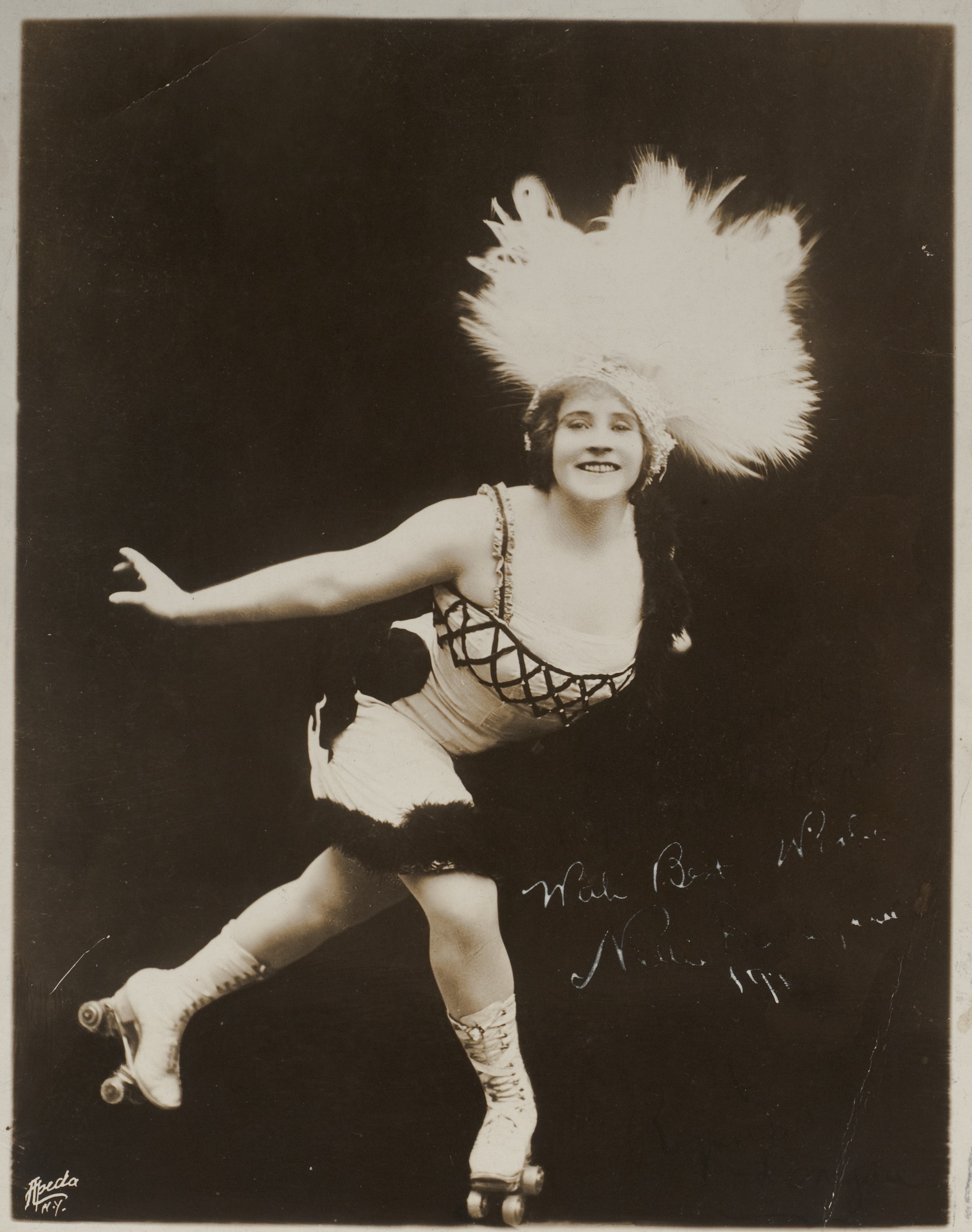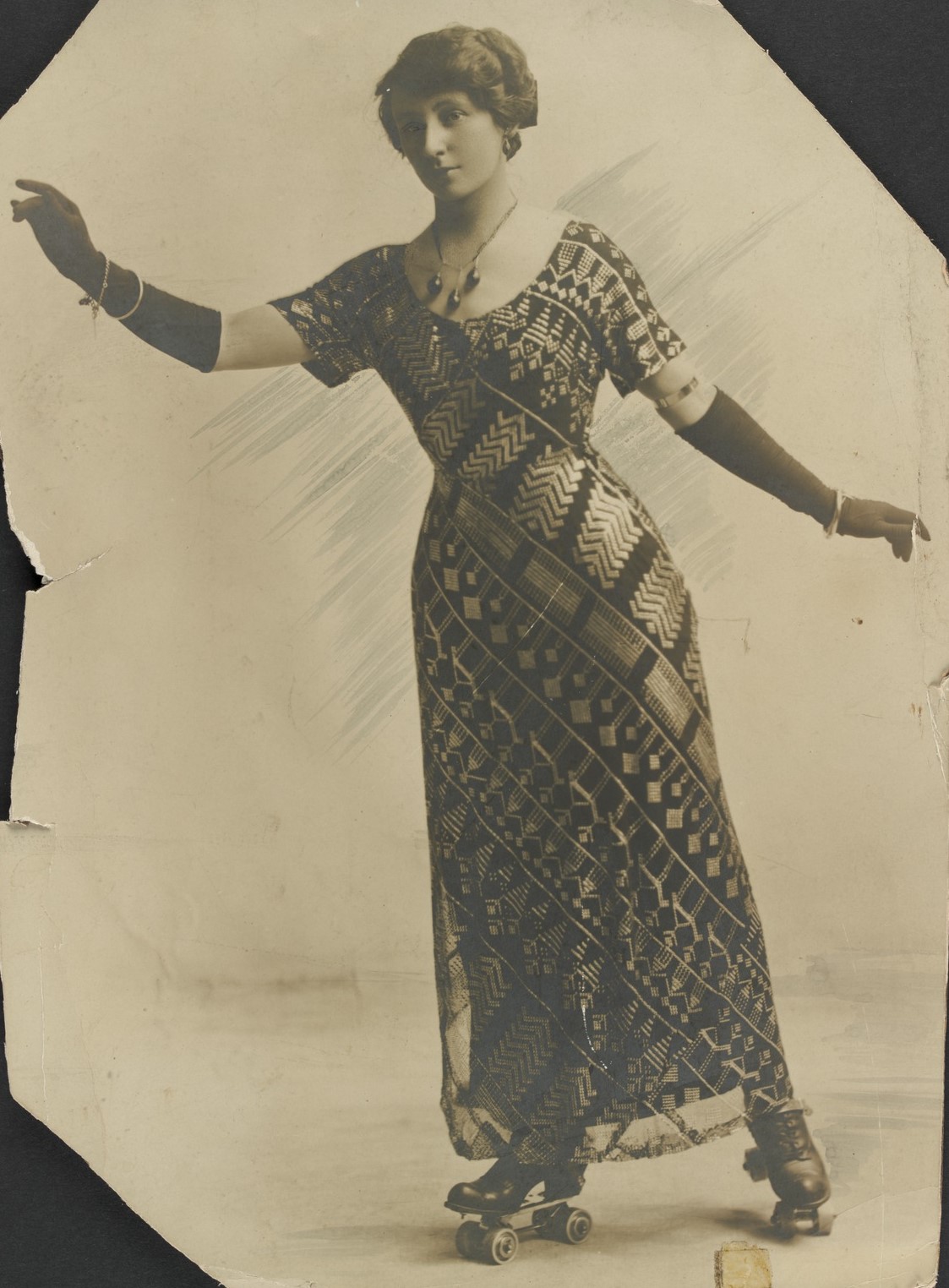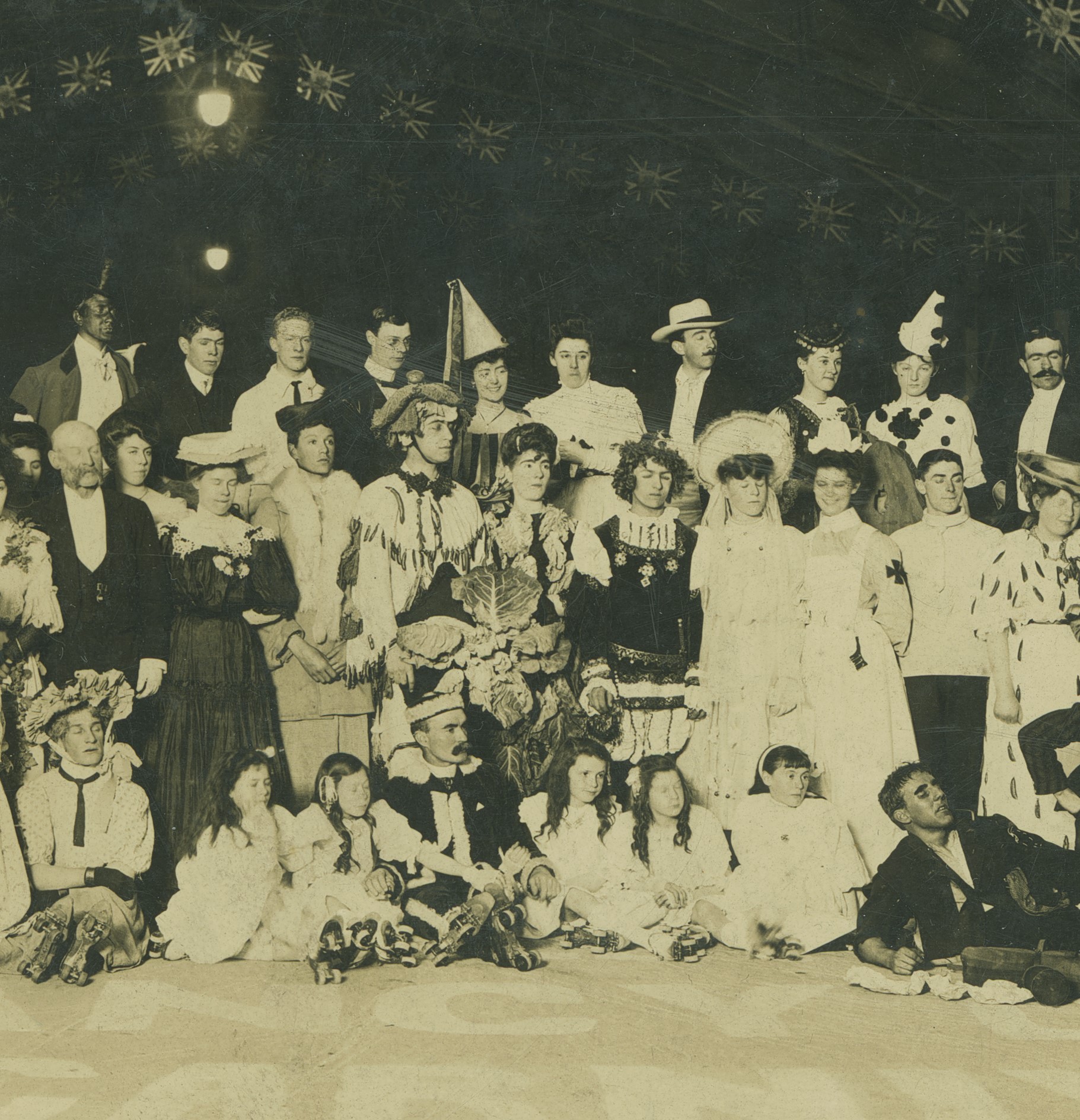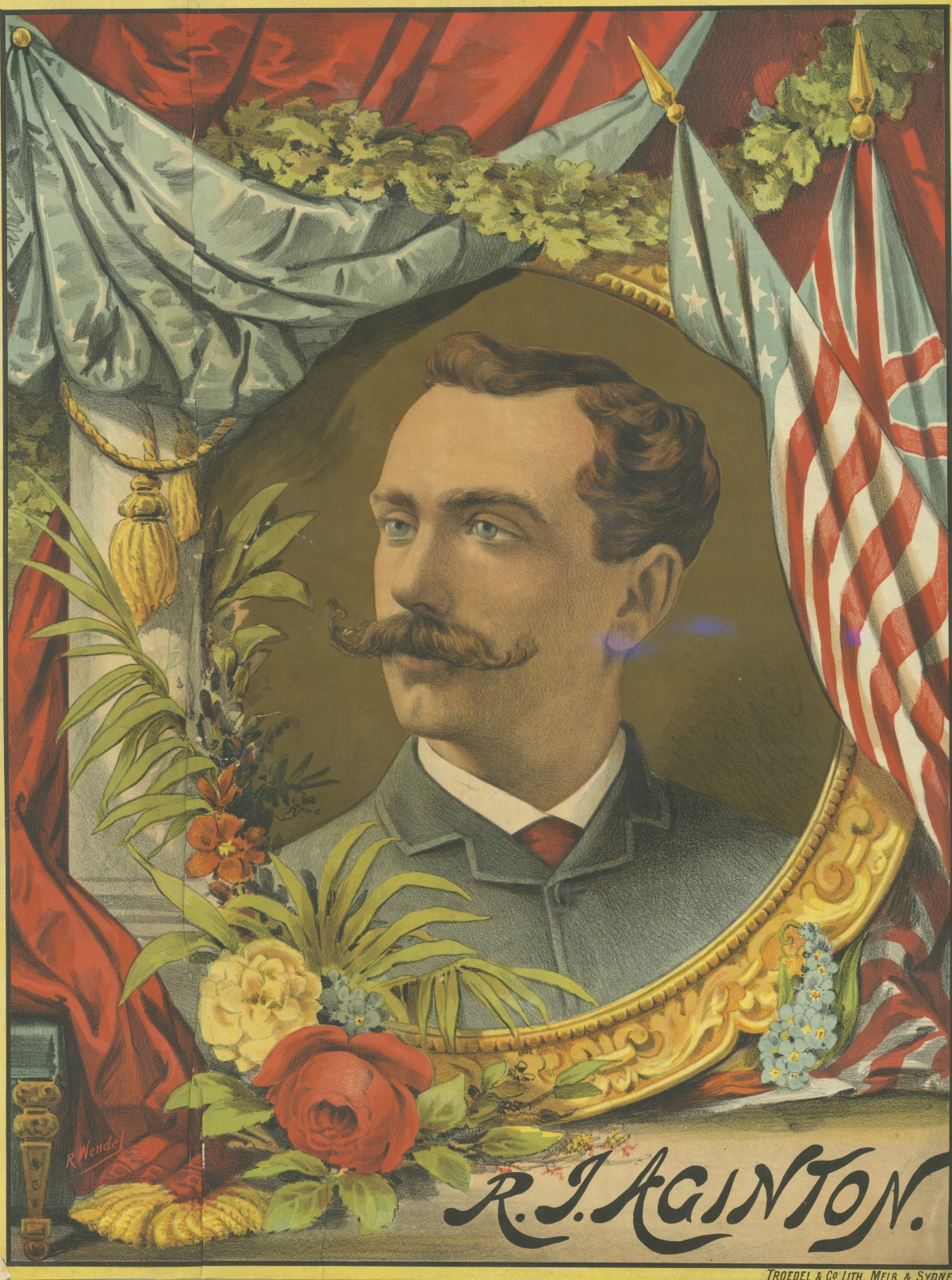Roller skating was a popular pastime in Sydney and the rest of Australia, with the earliest rinks introduced in the 1870s. Indeed, footage shot of a roller skater in Sydney’s Prince Alfred Park is believed to be Australia’s earliest surviving film.
Patineur Grotesque, aka The Humourous Rollerskater or The Burlesque Roller Skater, was made by Marius Sestier, a representative of film pioneers the Lumière brothers, during a visit to Australia in September 1896. Within a fortnight of his arrival in Sydney, Sestier opened his ‘Salon Lumière’ at the Lyceum Theatre and it was Australia’s first ever cinema.1
Another clip from the National Film and Sound Archive of Australia shows a roller skating carnival probably at the Glideway Skating Rink in Melbourne Street, South Brisbane, Queensland.

Nellie Donegan, international speed roller skater, 1913
State Library of NSW, [P1/486]

Miss Hilda Florence Beyer, 1912
State Library of Victoria, [Accession No: H84.233/8]

Roller skating carnival in Victoria, 1900s
Featuring fancy dress including what appears to be a man dressed as a cabbage (centre) among other costumes, State Library of Victoria, [ID 2077181]
Despite the ‘vast assemblage’ of people who patronised the Darlinghurst Skating Rink in those first few months, the Evening News reported there was ’not a sign of larrikinism or even rough play’ and skaters retained a level of respectability. The rink’s first ‘grand masquerade’ was held on 22 July 1889, which featured fancy dress and a carnival. Prizes were offered to ’the lady and gentleman who do the best waltz on skates’.2
The second masquerade was ‘simply bewitching’ on 12 August, and featured a range of characters including a Miss Moore, who dressed as a butterfly, Mrs McElhone, as an angel, and Miss Puckle, as an edition of the Argus newspaper in gold lettering. And the prize for the most original dress was awarded to a Mr Ferrier, who dressed as a cabbage garden. Some businesses used these opportunities to dress participants in costumes advertising their brand or products, from cigarettes to bicycles, to paper and boot paste.3
Of equal attraction to the rink itself was its operator – the American ‘champion trick skater of the world’ and ‘King of the Rink’, Robert J Aginton. Born in New York in about 1858, Aginton ‘rinked his way from ‘Frisco [San Francisco] to London’ until he arrived in Australia in the 1880s.4

Robert J Aginton, 1886,
Chalk lithograph by Richard Wendel, published by Troedel and Co, State Library of Victoria, [Accession No: H2000.180/19]
The self-styled ‘Professor Aginton’ was a ‘smart, small, swift, muscular manly man; keen-sighted, sure-footed, and with plenty of nerve’. Just over two months prior to the opening of the Darlinghurst Skating Rink, he had stunned audiences with ‘his wonderful flight on ball-bearing skates down an incline’ 130 feet long by 42 inches wide. According to one newspaper, he could spin on his skates at 300 revolutions a minute, and he later claimed he earned £100 per week to appear at one Sydney rink.5
Read the next part of the story.
Sally Jackson, ‘Marius Sestier and Australia’s Earliest Film’, National Film and Sound Archive of Australia, 22 November 2010, https://www.nfsa.gov.au/latest/marius-sestier-collection; Sally Jackson, ‘Salon Lumière’, National Film and Sound Archive of Australia, 22 November 2010, https://www.nfsa.gov.au/latest/salon-lumiere; Sally Jackson, ‘Skating in the Park’, National Film and Sound Archive of Australia, 15 June 2011, https://www.nfsa.gov.au/latest/skating-park-patineur-grotesque-location-identified; and Patineur Grotesque (1896), Australian Screen, NFSA title number 737233, https://aso.gov.au/titles/historical/patineur-grotesque/. ↩︎
‘The Rinks’, Evening News, 22 July 1889, 8, http://nla.gov.au/nla.news-article108106940. ↩︎
‘The Rinks’, Evening News, 13 August 1889, 5, http://nla.gov.au/nla.news-article108106697 and [Roller skating carnival], State Library of Victoria, ID 2077181, http://handle.slv.vic.gov.au/10381/466516. ↩︎
‘Advertising’, Sydney Morning Herald, 18 May 1889, 2, http://nla.gov.au/nla.news-article13734532 and The Bulletin 9, no 445, 11 August 1888, 18, http://nla.gov.au/nla.obj-704753662. ↩︎
‘Aginton’s Flight at the Rink’, The Pictorial Australian, 1 March 1889, 35, http://nla.gov.au/nla.news-article226925919 and ‘Professor Aginton’, The Australian Star, 18 December 1890, 5, http://nla.gov.au/nla.news-article227480649. ↩︎

